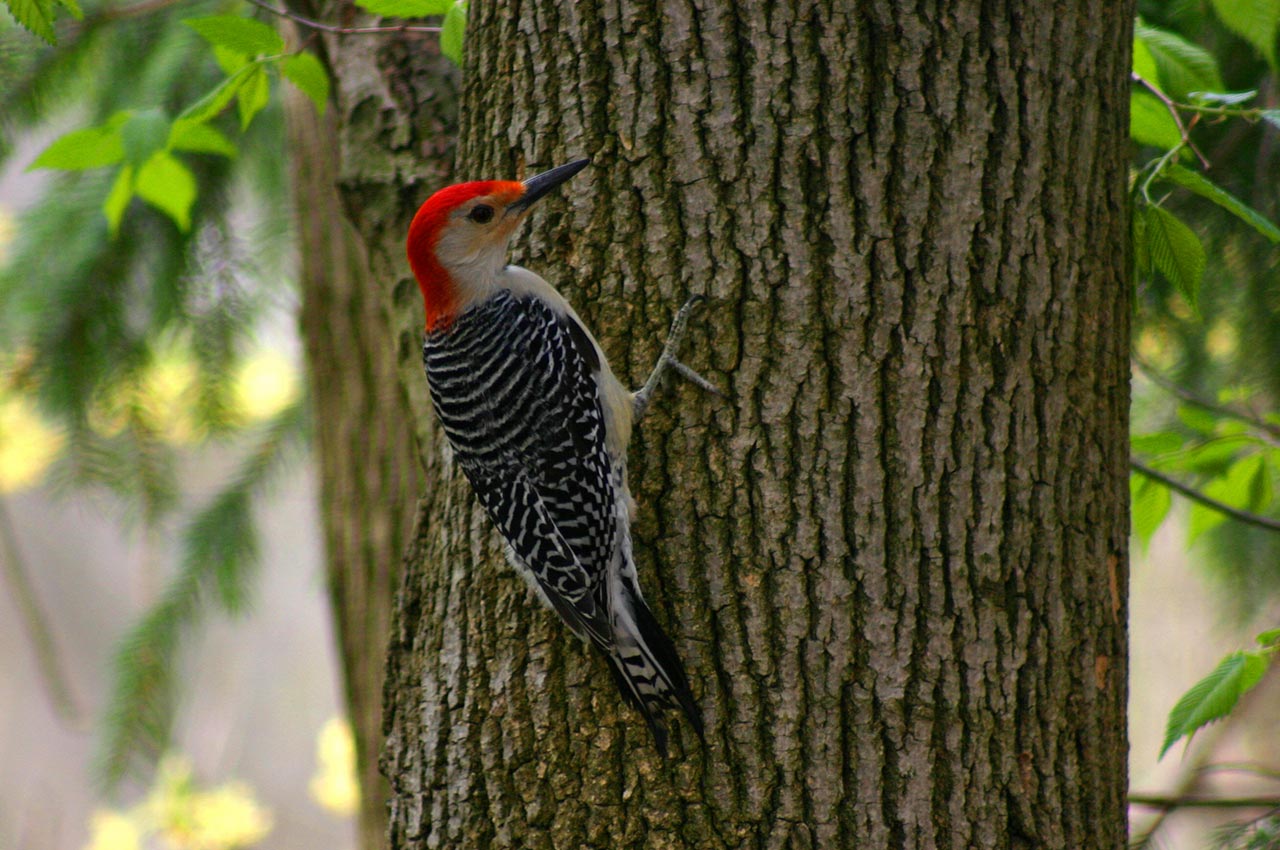Observing Woodpeckers in Florida: Species Diversity and Circulation
Observing Woodpeckers in Florida: Species Diversity and Circulation
Blog Article
Woodpeckers Unleashed: Discovering the Wonders of These Competent Tree Mountain Climbers
Woodpeckers, with their unique markings and rhythmic drumming resembling through wooded areas, hold an one-of-a-kind location in the bird globe. Their specialized anatomy and adjustments enable them to browse upright surfaces with unequaled skill. However, their proficiency of tree climbing is just one element of their remarkable habits. As we look into the intricate details of woodpeckers' nesting habits, feeding strategies, and the ongoing conservation efforts to secure these amazing birds, a much deeper gratitude for their area in nature unfolds.
Makeup and Adaptations
When examining the makeup and adaptations of woodpeckers, one can observe impressive functions that make it possible for these birds to thrive in their specialized ecological niche. Woodpeckers are geared up with a collection of distinct anatomical qualities that assist them in their woodpecking behavior. One of one of the most prominent attributes is their strong, chisel-like beak, which is specialized for drilling right into wood to uncover insects or develop nesting cavities. This beak is supported by strong neck muscles and a highly created head framework that works as a shock absorber, allowing woodpeckers to continuously eat trees without creating brain injury. Furthermore, woodpeckers have zygodactyl feet, with two toes dealing with onward and two facing backwards, giving a firm grip on tree trunks while they browse for food or drum for communication.
Additionally, woodpeckers have a special tongue framework that is long, barbed, and sticky, enabling them to extract insects from crevices in timber. This specialized adjustment allows woodpeckers to exploit a food source that is unattainable to many other bird species. Overall, the anatomy and adaptations of woodpeckers showcase the impressive transformative solutions that have enabled these birds to grow in their arboreal environment.
Drumming Behavior
Having actually discovered the anatomy and adjustments of woodpeckers, the emphasis currently moves to comprehending their drumming actions, a distinctive aspect of their interaction and territorial displays. Drumming is a crucial form of communication among woodpeckers, serving several functions such as establishing territories, drawing in mates, and signaling alarm system. Each woodpecker species has an one-of-a-kind drumming pattern that assists people identify members of their own varieties and differentiate them from competitors or killers.
Woodpeckers produce drumming noises by quickly pecking on powerful surface areas such as dead trees, utility posts, or also metal things, creating a collection of balanced beats. The strength and rate of drumming can differ based upon the objective; for circumstances, a quick drumming series may represent hostility in the direction see this here of trespassers, while a slower and softer drumming pattern might indicate courtship (Woodpeckers in Florida). Additionally, woodpeckers may readjust the frequency and duration of their drumming to share details messages effectively
Nesting Habits
Discovering the nesting behaviors of woodpeckers discloses fascinating understandings into their reproductive habits and habitat selections. Woodpeckers are recognized for their special nesting preferences, frequently digging deep into tooth cavities in trees to produce protected areas for raising their young. These cavities offer not only as a nesting website however also as a safe haven from killers and harsh weather condition.
Woodpeckers exhibit a high degree of integrity to their nesting websites, often returning to the same place every year. This behavior highlights the significance of suitable habitat availability for their reproductive success. The choice of a nesting site is essential for woodpeckers, with factors such as tree types, height, and degeneration phase playing significant roles in their decision-making procedure.
Remarkably, some woodpecker species are understood to dig deep into numerous tooth cavities within their area, giving themselves with different nesting alternatives. This approach may function as a kind of insurance policy versus possible threats or disturbances to their key nesting website.

Feeding Techniques
One of the most distinctive feeding habits of woodpeckers is drumming, which involves rapid pecking on trees to reveal insects underneath the bark. Woodpeckers are additionally known to excavate tooth cavities in trees to access hidden insect larvae or sap. Some species, like the acorn woodpecker, store nuts in specifically created holes called granaries.
Conservation Initiatives
Among the intricate feeding techniques showed by woodpeckers, the conservation efforts targeted at protecting these fascinating birds play an important role in protecting their environments and populaces. Woodpeckers deal with my company numerous threats to their survival, consisting of environment loss due to logging, environment change modifying their ecological communities, and collisions with manufactured frameworks such as structures and lorries - Woodpeckers in Florida. Guardians are proactively functioning to attend to these challenges and make certain the lasting wellness of woodpecker species

Education and learning and public awareness projects are also vital components of woodpecker preservation efforts. By elevating recognition regarding the significance of these birds in maintaining healthy woodland ecological communities, guardians can garner support for habitat conservation initiatives and advertise responsible land monitoring methods. Via collective initiatives between scientists, policymakers, and regional areas, we can collaborate to protect a future where woodpeckers grow in their natural environments.
Conclusion

Report this page